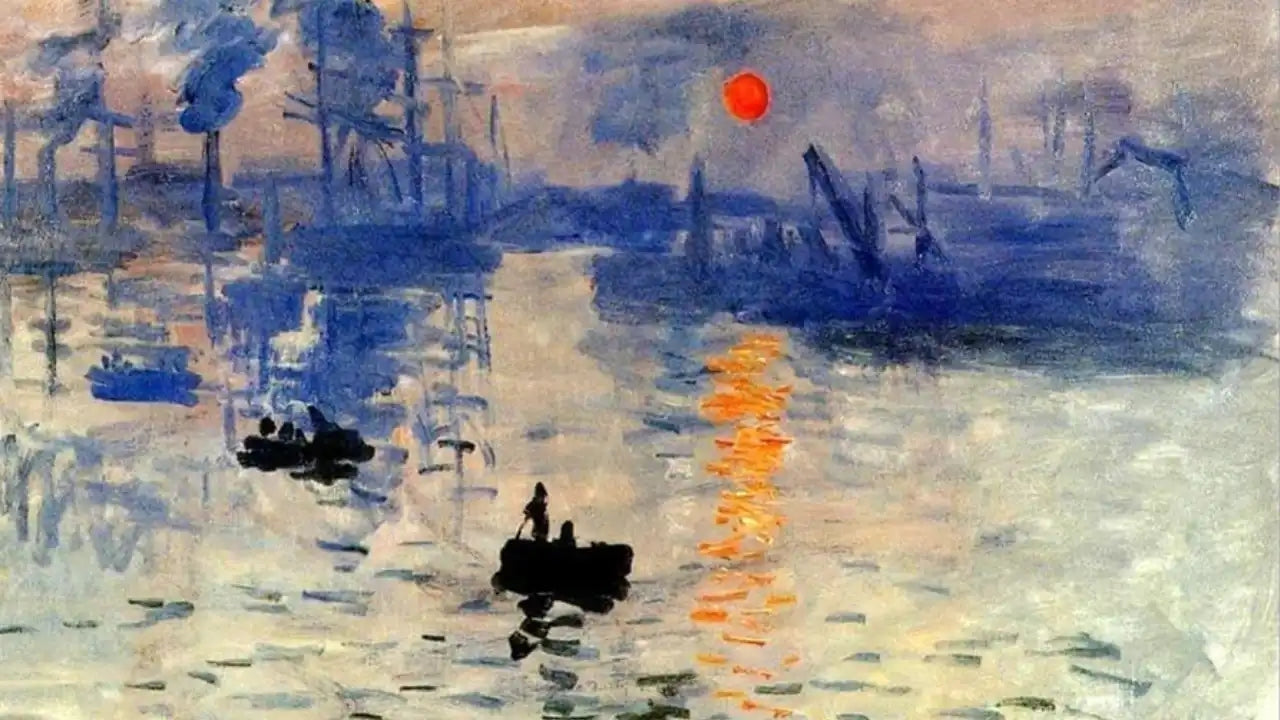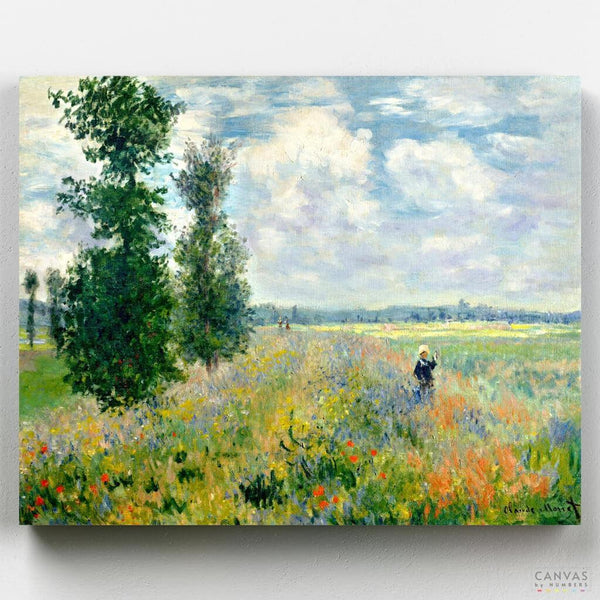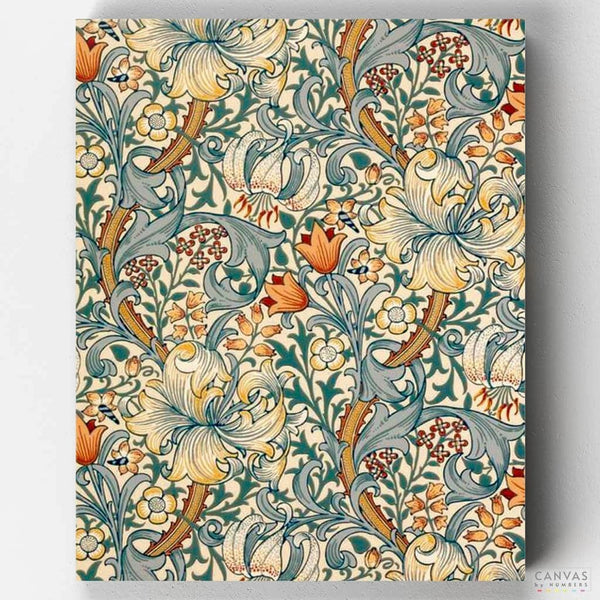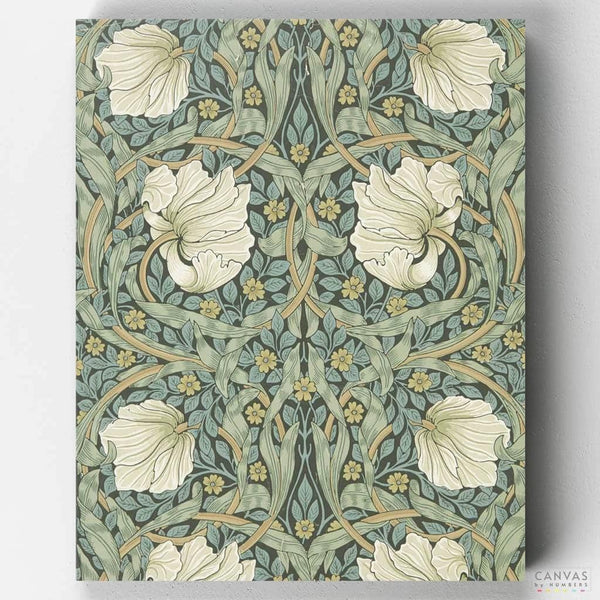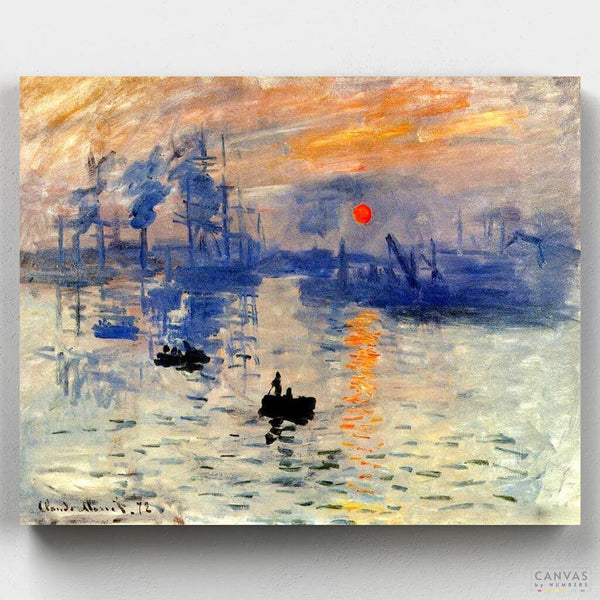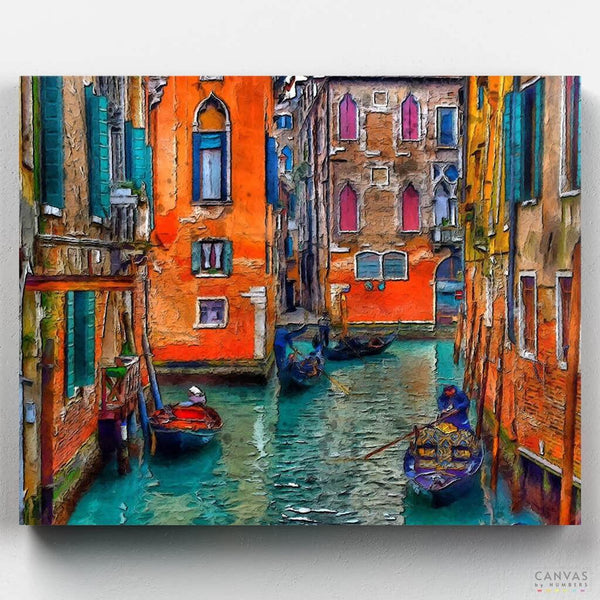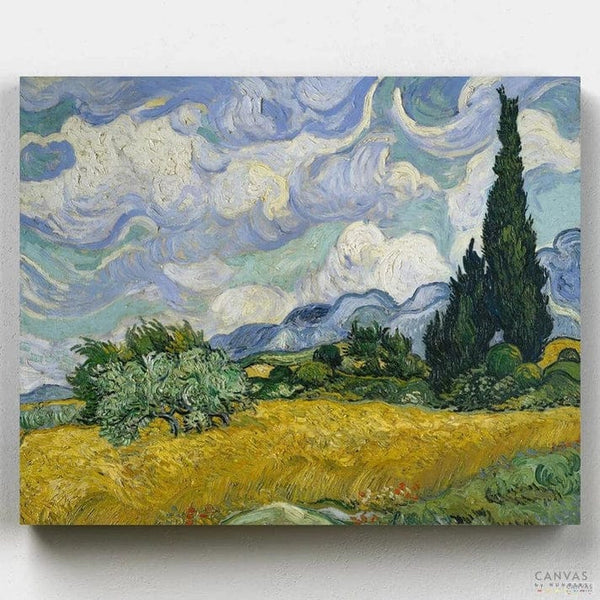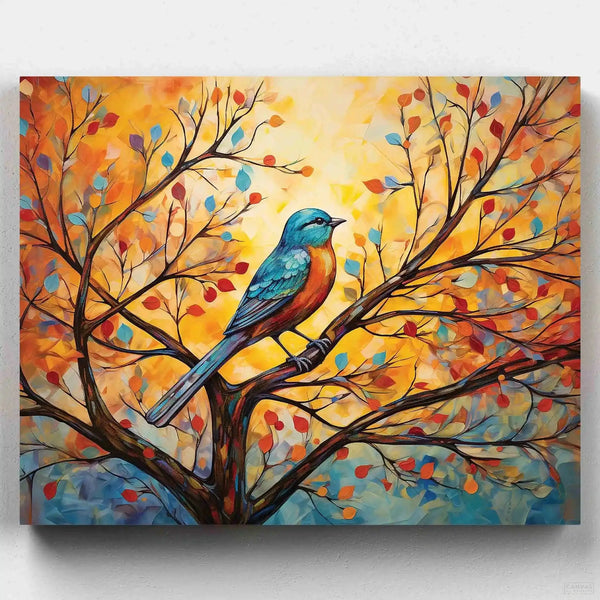You already know that at Canvas by Numbers, we are passionate about paint by numbers. But when it comes to the works of the Grand Masters, the enjoyment is twofold, as we offer the opportunity for anyone to paint some of the most famous paintings exhibited in the world's best museums.
In our catalog, there are many works by famous painters, but in this post, we will focus on one of the greatest of all time: Claude Monet.

What kind of works did Monet paint before creating Impressionism?
Claude Monet was born in France (1840-1926) and from a young age, he demonstrated his skill with brushes by painting seascapes, landscapes, or drawing caricatures.
He always wanted to dedicate himself to painting, and he could even have avoided military service by paying an amount his family was willing to cover if he abandoned art and joined the family business. But the artist preferred to complete military service, spending seven years in Algeria, rather than giving up his great passion.
When did Impressionism emerge in Monet, and what were its characteristics?
Upon his return from Africa, in Paris, he began experimenting with strokes and colors. His source of inspiration is nature and the surrounding environment, so he preferred to paint outdoors and capture the moment according to the time of day.
Monet's Impressionism is characterized by quick, spontaneous brushstrokes, which create a unique texture on the canvas, moving away from the realistic style and academic rules prevailing at the time. Lines appear blurred, some elements are barely perceptible; he aimed to capture fleeting moments through changes in light (the undeniable protagonist), which he achieved with the use of various shades (blues, grays, yellows, greens, or purples for the shadows).
It's a different way of depicting reality, always gentle, full of sensitivity and positivity, aiming to express the artist's "impressions" freely.
If you observe an Impressionist painting up close, you can appreciate these technical characteristics, but the subject may seem blurred. However, as you step back, the subjects represented by simple brushstrokes come to life and shine in all their splendor.
The name Impressionism originated in Paris in 1874 and was a derogatory comment by a critic about Monet's painting "Impression, Sunrise," which he exhibited at the Salon de Paris alongside other painters from the so-called "modern" group, according to the critic's viewpoint.
The Legacy of Monet's Impressionism
Monet was a prolific painter who realized his dream by creating his own outdoor setting to paint at his home in Giverny. He designed and captured his beautiful garden on canvas numerous times from different perspectives, at various times of the day and seasons: garden paths, water lilies, the Japanese bridge, etc. These are some of his most famous works.
Other great painters like Renoir, Degas, or Pissarro were part of the Impressionist movement.
The movement evolved into Post-Impressionism first and later gave rise to Expressionism, a style that contrasts with the hedonism of the Impressionists. Esteemed artists of the Expressionist movement started their journey under the influence of Claude Monet's art.
Famous Works of Monet's Impressionism
In our current Claude Monet Collection, you can choose from 14 of his most famous works. Here are some:


(*) Woman with a Parasol by Claude Monet In this work, his wife Camille is depicted among the wildflowers of the countryside. It captures a moment of a walk, without the conventional posing seen in portraits of the time.


Paint Famous Monet Impressionist Works by Numbers
Now that you know more about Claude Monet, dare to try your hand at one of his paintings. Dedicating time to yourself is a great idea, and practicing paint by numbers has many emotional and physical benefits. Moreover, it can be a handmade gift for that special person.
I suggest that since you are going to invest time and enthusiasm in painting a picture, choose the work of a great artist. After all, painting a Monet by yourself and proudly showing it to the world is no small feat.
What do you say? Have I convinced you? I hope so.
See you soon!
